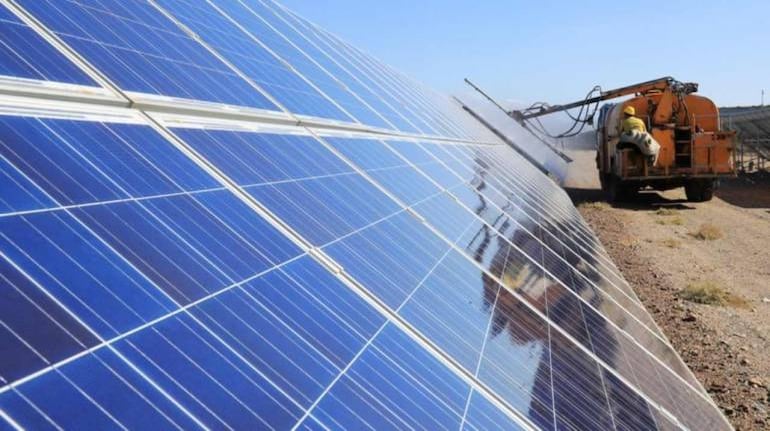According to a report by the International Energy Agency, new renewable power capacity in 2021 will rise to a second consecutive all-time high.
MONEYCONTROL NEWS
DECEMBER 04, 2021

Renewable electricity capacity by 2026 will rise more than 60 percent from 2020 levels to over 4,800 GW – equivalent to the current total global power capacity of fossil fuels and nuclear combined, the IEA said. (Representative image)
Renewable energy is set to account for nearly 95 percent of the increase in power capacity in the world through 2026, a report by the International Energy Agency (IEA) has shown, with solar power providing more than half the boost.
The Paris-based energy watchdog further said in its annual Renewables Market Report that the new renewable power capacity in 2021 will rise to a second consecutive all-time high, despite rising costs for materials used to make solar panels and wind turbines.
About 290 gigawatts (GW) of new renewable energy generation capacity, mostly in the form of wind turbines and solar panels, has been installed around the world this year, beating the previous record last year.
“This year’s record renewable electricity additions of 290 gigawatts are yet another sign that a new global energy economy is emerging. The high commodity and energy prices we are seeing today pose new challenges for the renewable industry, but elevated fossil fuel prices also make renewables even more competitive,” said IEA Executive Director Fatih Birol.
Renewable electricity capacity by 2026 will rise more than 60 percent from 2020 levels to over 4,800 GW – equivalent to the current total global power capacity of fossil fuels and nuclear combined, the IEA added.
More robust government policies and climate goals, advanced by pledges at the COP26 conference in Glasgow last month, are driving the increases but the pace of renewables growth needs to accelerate to limit temperature rises, the IEA said.
China leads the world in new capacity and is four years earlier of its own wind and solar infrastructure targets of 2030, while India will double new installations from 2015-2020.
"China continues to demonstrate its clean energy strengths, with the expansion of renewables suggesting the country could well achieve a peak in its CO2 emissions well before 2030," Birol said.
Still, the IEA warned that over the next five years, average annual additions of solar and wind capacity would need to nearly double from the agency's current predictions to achieve net zero emissions by 2050, while annual demand growth for biofuels would need to quadruple."To get renewables on track with net zero by 2050, governments not only need to address current policy and implementation challenges but also increase ambition for all renewable energy uses," the IEA wrote.
No comments:
Post a Comment